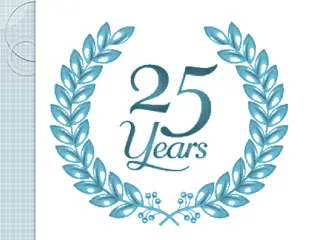Grade 8 Math Problem-Solving Questions
Explore sample Grade 8 math problems involving right triangles, gas mileage calculations, linear equations, and tank filling rates. Test your problem-solving skills with these diverse scenarios and practice your mathematical reasoning.
Download Presentation

Please find below an Image/Link to download the presentation.
The content on the website is provided AS IS for your information and personal use only. It may not be sold, licensed, or shared on other websites without obtaining consent from the author. Download presentation by click this link. If you encounter any issues during the download, it is possible that the publisher has removed the file from their server.
E N D
Presentation Transcript
Claim 2 Smarter Balanced Sample Items Grade 8 Problem Solving Questions courtesy of the Smarter Balanced Assessment Consortium Item Specifications Version 3.0 Slideshow organized by SMc Curriculum www.ccssmathactivities.com
#1 Two sides of a right triangle have lengths 10 units and 6 units. There are two possible lengths for the third side. Enter the longest possible side length, in units, of this triangle.
#1 Answer Rubric: (1 point) The student correctly enters the longest side of the triangle. Answer: 4
#2 Justin s car can travel 771 2 miles using 31 5 using 31 10 gallons of gas. Kim s car can travel 991 5 gallons of gas. At these rates, how far, in miles, can each car travel using 1 gallon of gas? Drag each person s car to the number line to show the number of miles.
#2 Answer Rubric: (2 points) The student places both cars at the correct point. (1 point) The student places only one car at the correct point. Answer: Justin s car at the 25-mile mark and Kim s car at the 31 mile mark
#3 Line a is shown on the graph. Use the Add Arrow tool to construct line b on the graph so that: Line a and line b represent a system of linear equations with a solution of (7, 2). The slope of line b is greater than 1 and less than 0. The y-intercept of line b is positive.
#3 Answer Rubric: (1 point) The student is able to construct a line that meets the requirements. Answer:
#4 A cylindrical tank has a height of 10 feet and a radius of 4 feet. Jane fills this tank with water at a rate of 8 cubic feet per minute. Using this rate, determine the number of minutes it will take Jane to completely fill the tank without overflowing. Enter your answer, rounded to the nearest minute, in the response box.
#4 Answer Rubric: (1 point) The student enters the correct number of minutes. Answer: 63
#5 The table shows some values from a linear function. x y 1 5 1 3 3 Use the Add Arrow tool to create a graph of a different function that has the same rate of change as the one shown by the table of values.
#5 Answer Rubric: (1 point) The student draws a line with the correct slope and does not pass through the points shown in the function table. Answer: slope of 2, passes through any y-intercept except (0, -3)
#6 Helga wants to have a lot of helium-filled balloons at her party. The helium tank costs $58 to rent. Balloons cost $0.29 each. She wants to have 5 helium-filled balloons for each party guest. Enter an equation that represents the total cost, C, in dollars of the helium-filled balloons for n party guests.
#6 Answer Rubric: (1 point) The student enters a correct equation in the response box. Answer: E.g., C = 58 + 1.45n
#7 A sphere and the base of a cone have a radius of 3 inches. The volume of the sphere equals the volume of the cone. What is the height of the cone, in inches? Enter the height, in inches.
#7 Answer Rubric: (1 point) The student enters the correct radius in the response box. Answer: 12
#8 A comet is orbiting the sun. The equation d = 130,000t represents the relationship between d, the distance traveled by the comet in kilometers and t, the time, in hours, since astronomers first spotted the comet. What does the 130,000 in the equation tell us about the comet? A. The comet will travel 130,000 kilometers in a year. B. The comet is traveling at 130,000 kilometers per hour. C. The comet has traveled 130,000 kilometers since astronomers spotted it. D. The comet has been traveling for 130,000 hours since astronomers spotted it.
#8 Answer Rubric: (1 point) The student selects the correct interpretation. Answer: B























